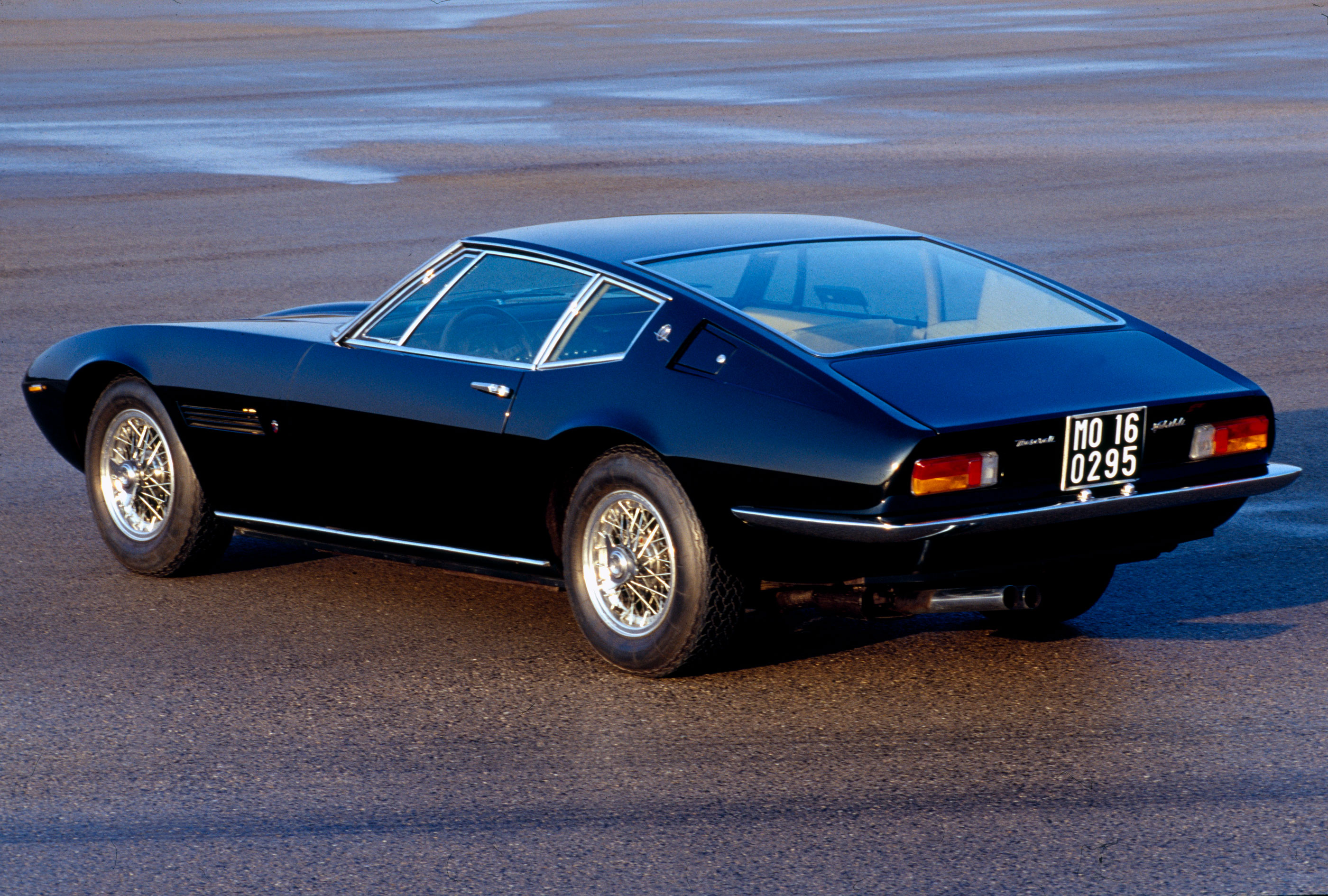Maserati Ghibli is Italian-style muscle
Here’s one to stump a car buddy: name a late-1960s coupe wearing a sharply creased fastback body on a chassis with leaf spring rear suspension, a racing-derived high-torque 5.0-liter V-8 under the long hood, and an “SS” badge on the rear.
Is it some Australian concoction? Perhaps some mutation of the Monaro GTS from GM’s Holden operation? Well, it’s not American, that’s for sure. But it isn’t from Down Under, either, unless you’re talking about down under France and Switzerland.
It’s the 1967–73 Maserati Ghibli, a semi-exotic that seems to have as much in common with a Mustang of the period as a Ferrari. Surprisingly, the Ghibli has something else in common with classic Mustangs: price. Well, it does if we’re talking about the Boss 429, which has a similar value profile to the Ghibli Coupe (although you’ll pay considerably more for a Ghibli SS). And then there’s this: Henry Ford II owned a Ghibli.


Not just hot air
Named for a North African wind (coincidentally the same wind that gave the Volkswagen Scirocco its Mediterranean moniker), the Maserati Ghibli blew through the ranks of Italian GTs as a 150-mph instant classic and—to most eyes—one of the most beautiful cars ever made. There is no questioning the original Ghibli’s place in the pantheon of motorized Italian masterpieces. Today, the badge adorns Maserati’s midsize sport sedan, a marketing choice that has in no way dimmed the original’s glow.
While values of the original Maserati Ghibli have risen considerably over the past few years, prices still significantly trail two Italian supercars often mentioned in the same sentence: the Ferrari 365 GTB/4 Daytona and Lamborghini Miura.
Unlike Ferraris and Lamborghinis of the period, which had independent rear suspension, the Ghibli used a simple leaf-sprung solid rear axle. It was a holdover from earlier Maserati models, and it worked. Ultimate handling was not the Ghibli’s forte, but rather long-distance high-speed comfort with outstanding everyday handling. In that regard, the Ghibli was a standout.
An artist’s masterwork
Here’s another Mustang connection: The 1967 Maserati Ghibli sprang from the prolific pen of Giorgetto Giugiaro, who was with Carrozzeria Ghia at the time. While working for Bertone, he had already created such masterpieces as a one-off Mustang commissioned by the publisher of Automobile Quarterly, plus the Iso Grifo–the Italian GT powered by Corvette engines, and later, the Mustang’s 351 Cleveland.

The Ghibli is said to be Giugiaro’s favorite design from that period. It’s easy to see why. At first glance, the Ghibli displays the angular theme that would come to define Maseratis of the 1970s. Upon close inspection, however, the body reveals its many sublimely subtle curves. Giugiaro seems to have perfected the fastback form on the Ghibli, with its roof being one exquisitely clean arc from windshield header to trunklid tip.
Torque, American style
The 1967 Maserati Ghibli retailed for $19,000 when new (that’s almost $140,000 today). Henry Ford II was reported to have bought the first one imported to America, and that car has been accounted for. While Hank the Deuce had an eye for Italian beauty, he would have no doubt recognized a couple of similarities to sporty American cars of the era, including, of course, the Mustang. For one, the Ghibli was powered by a V-8 rather than the V-12s found in rival Ferrari and Lamborghini models.
Descended from the Maserati racing engine of the 1950s, the 4.7-liter Ghibli V-8 used aluminum construction, double overhead cams, dry-sump lubrication, and four twin-barrel Weber carbs. While its engine was far more exotic than the typical American pushrod V-8, the Ghibli burbled like a muscle car at low speeds, but the sound turned into a mesmerizing howl as revs climbed.
Interestingly, the Maserati Ghibli’s V-8 was not a high-revving engine. With a relatively long stroke of 85mm, it redlined at just 5,500 rpm. The Ferrari V-12 could spin to 7,000 rpm, and even some American V-8s could rev past 6,000 rpm. The payoff is that the Ghibli out-torques a Ferrari V-12 of the period: 340 lb.-ft. versus about 280 lb.-ft. for the Ferrari 330 GTC. That’s more torque, by the way, than the Camaro Z/28 or Mustang Boss 302. As an added bonus, the Maserati V-8 has a distinctly muscular V-8 sound. It used a 90-degree crankshaft, like American V-8s.
That kind of twist was a very American characteristic, and so was the optional three-speed automatic transmission, although most Ghiblis had the standard five-speed manual. In 1969, the Ghibli SS appeared with a 4.9-liter, 330-horsepower version of the engine and a top speed of around 165 mph. Built from steel, the Ghibli coupe weighed about 3,600 pounds.
In all, 1,170 Ghiblis were produced from 1967–73, including 125 Spider convertibles. Each is pure Italian thoroughbred … with North African name and American personality.









